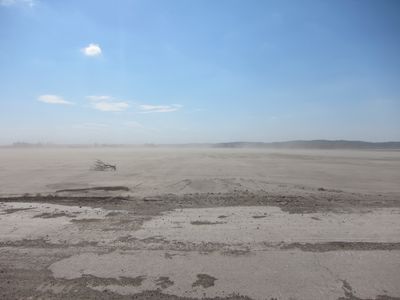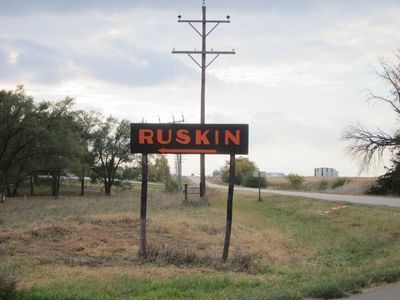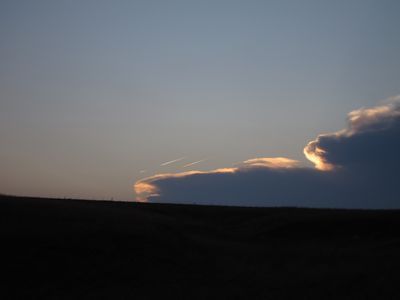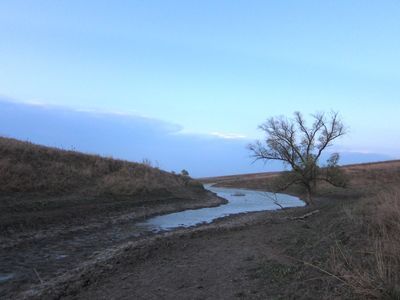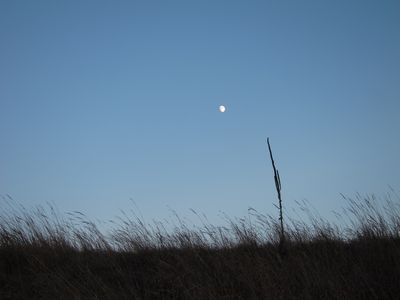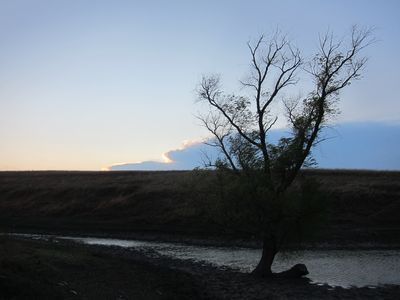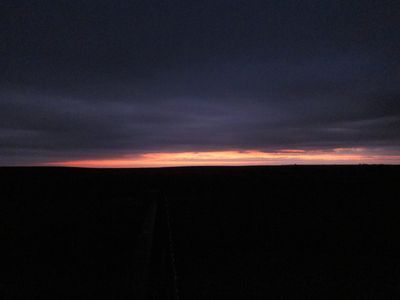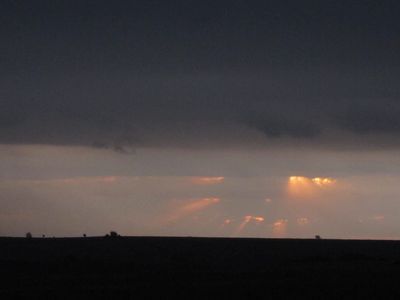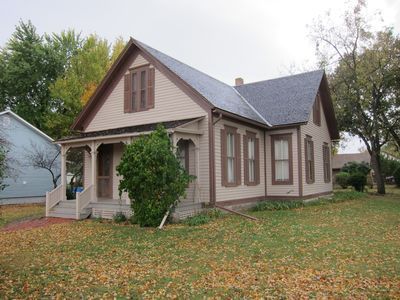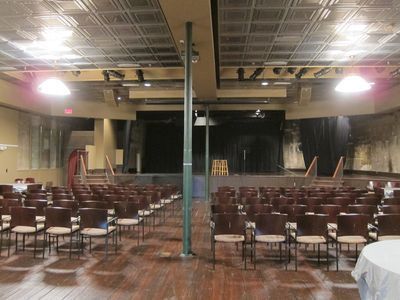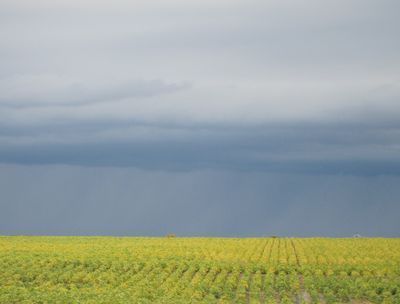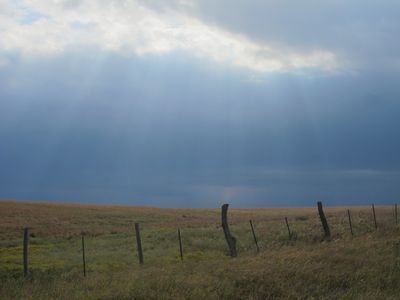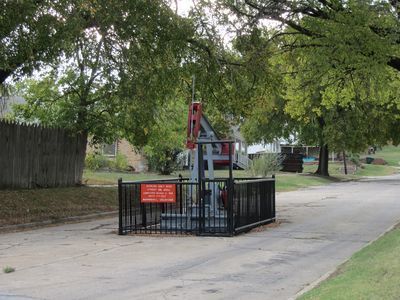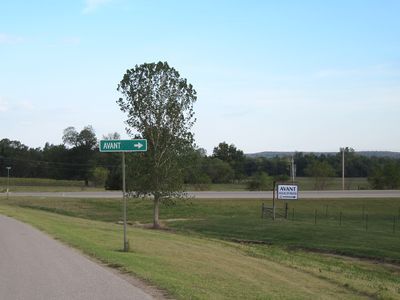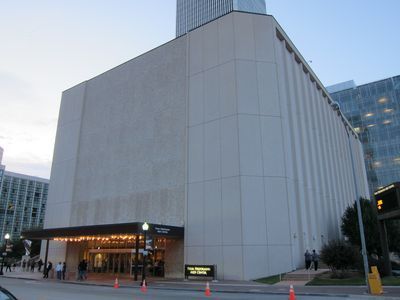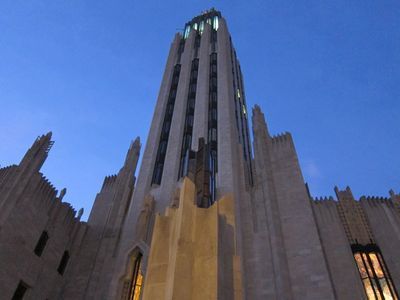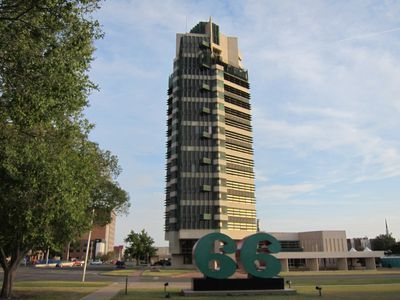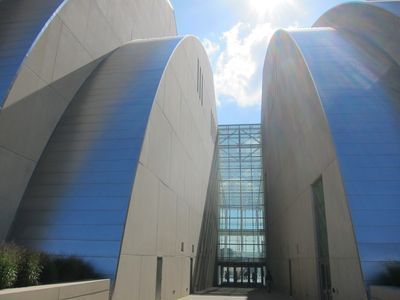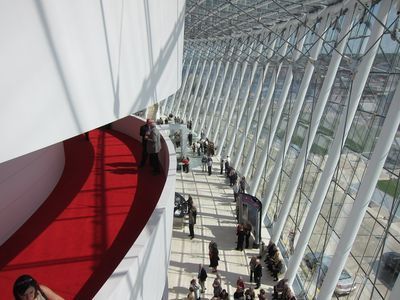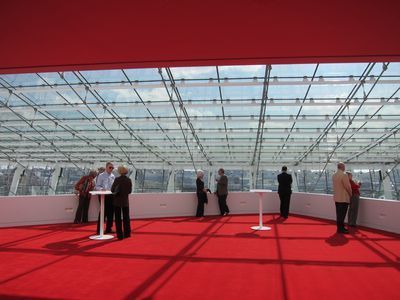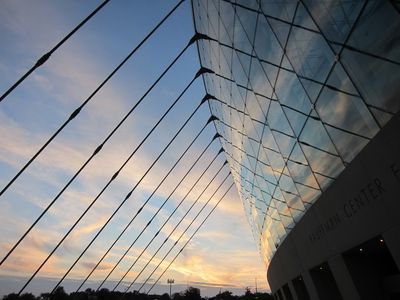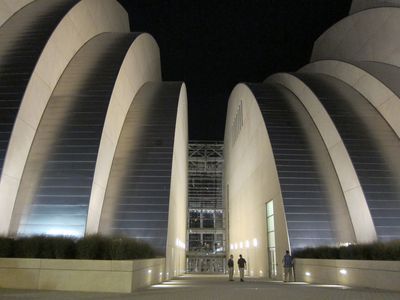Alex Ross's Blog, page 213
November 1, 2011
Miscellany: Heart of Darkness, etc.
"Ever since I began to write, it has been my highest ambition to have one of my stories made into an opera, and when you suggested that use for Heart of Darkness, I was so moved I could not speak," Joseph Conrad once wrote to the American composer John Powell. Nothing came of the plan, although Powell had Heart of Darkness in mind when he wrote his Rhapsodie Nègre of 1917. (Powell was a horrendous, politically active racist, and it is surely for the best that he left Heart of Darkness alone.) Finally, after more than a century, the tale has found its composer: a chamber opera by Tarik O'Regan receives its premiere at the Royal Opera House tonight. Tom Service has a preview.... Grass-roots competitions are all the rage: Hilary Hahn is inviting submissions for her Encores Contest, while David Lang is running a piano competition. By the way, Molly Sheridan's NewMusicBox interview with Hahn is very much worth a read.... Schott introduces PSNY— "a curated, highly selective collection of works by contemporary composers, instantly available for download by ensembles, programmers, and music fans alike." ... You know you've made the big time when you get to appear on Sound Notion.... Metaphor of the week: Matthew Guerrieri writes that Lang Lang's attempt at the great Schubert B-flat Sonata was "like touring a mansion with a magnifying glass."
October 31, 2011
Thing of beauty
A Bachian video by Alexander Chen, of Google Creative Labs.
October 30, 2011
Grimaud vs. Abbado
There's a notable musical scoop in this week's issue of The New Yorker: D. T. Max, in a profile of the pianist Hélène Grimaud, has the inside story of her great Mozart cadenza dispute with Claudio Abbado. You can write the entire piece online.
October 29, 2011
Not to mention Robert Ashley
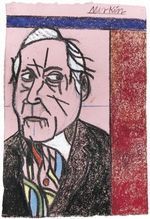 Also missing from this week's miscellany is acknowledgment of all the welcome activity surrounding Robert Ashley next month. Amanda MacBlane, in Time Out New York, has a profile of the avant maestro, who turned eighty last year. There doesn't seem to be a specific reason for the current "groundswell," as MacBlane calls it, and there needn't be: Ashley is a major figure not only in the American experimental tradition but also in the recent history of conceptual theater. From Nov. 1 to Nov. 5, the Incubator Arts Project, based at St. Mark's in the Bowery, focuses on Ashley's chamber and instrumental music; there's info here. On Nov. 6, as part of Performa 11, there will be a daylong performance of Ashley's 1983 television opera Perfect Lives, moving through various locations in the East Village. And, on Nov. 19-21, the Kitchen, again in league with Performa 11, presents Ashley's pathbreaking 1967 opera That Morning Thing, which no one has attempted in forty years. One more event follows in December — a Spanish-language version of Perfect Lives, called Vidas Perfectas. Anyone who wishes to read about Ashley in depth should await Kyle Gann's Ashley book, which the University of Illinois Press will publish next year; there's a teaser page of musical examples on Kyle's site. No one has expressed interest in reviving the Ecstatic Radio Fantasia on Robert Ashley's "She Was a Visitor," which is just as well.
Also missing from this week's miscellany is acknowledgment of all the welcome activity surrounding Robert Ashley next month. Amanda MacBlane, in Time Out New York, has a profile of the avant maestro, who turned eighty last year. There doesn't seem to be a specific reason for the current "groundswell," as MacBlane calls it, and there needn't be: Ashley is a major figure not only in the American experimental tradition but also in the recent history of conceptual theater. From Nov. 1 to Nov. 5, the Incubator Arts Project, based at St. Mark's in the Bowery, focuses on Ashley's chamber and instrumental music; there's info here. On Nov. 6, as part of Performa 11, there will be a daylong performance of Ashley's 1983 television opera Perfect Lives, moving through various locations in the East Village. And, on Nov. 19-21, the Kitchen, again in league with Performa 11, presents Ashley's pathbreaking 1967 opera That Morning Thing, which no one has attempted in forty years. One more event follows in December — a Spanish-language version of Perfect Lives, called Vidas Perfectas. Anyone who wishes to read about Ashley in depth should await Kyle Gann's Ashley book, which the University of Illinois Press will publish next year; there's a teaser page of musical examples on Kyle's site. No one has expressed interest in reviving the Ecstatic Radio Fantasia on Robert Ashley's "She Was a Visitor," which is just as well.
Illustration: Richard Merkin, from The New Yorker .
October 28, 2011
Happy birthday, Bridge
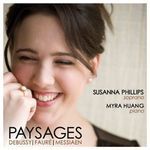 I meant to add to one of my recent miscellanies a few words of congratulation to the top-flight independent label Bridge Records, which is celebrating its thirtieth anniversary. Allan Kozinn recently had a profile of the Starobin family — David, Becky, Robert, and Allegra, all involved with the label — in the Times. Christian Carey reviews an anniversary concert in Musical America. Bridge's most recent releases seem as strong as ever: Susanna Phillips's recital of Debussy, Messiaen, and Fauré is gorgeous at every turn.
I meant to add to one of my recent miscellanies a few words of congratulation to the top-flight independent label Bridge Records, which is celebrating its thirtieth anniversary. Allan Kozinn recently had a profile of the Starobin family — David, Becky, Robert, and Allegra, all involved with the label — in the Times. Christian Carey reviews an anniversary concert in Musical America. Bridge's most recent releases seem as strong as ever: Susanna Phillips's recital of Debussy, Messiaen, and Fauré is gorgeous at every turn.
Miscellany: Teletubbies lunaires, etc.
In a recent column on Mieczysław Weinberg, I mentioned the composer's score for Vinni-Pukh, the Soviet cartoon version of Winnie-the-Pooh. This same music, in an arrangement by Lev Zhurbin, will appear on a Nov. 3 program by the Brooklyn Phil, focusing on Russian cartoon scores. Shostakovich's The Silly Little Mouse is also featured.... The great experimental composer Alvin Lucier recently retired from Wesleyan University after teaching there for forty years. The college will host a major celebration of his work on Nov. 4-6.... The fierce-fingered pianist Lisa Moore will play at Roulette on Nov. 16, marking the release of two records on Cantaloupe: Caprichos Enfáticos, by her husband, Martin Bresnick; and Annie Gosfield's Lightning Slingers and Dead Ringers, which is paired with the same composer's Brooklyn Dodgers tribute, Brooklyn, October 5, 1941 (for piano with baseballs and catcher's mitt).... The Oregon Symphony Spring for Music program that I and others raved about last spring is now on CD.... The new season of the Black Pearl Chamber Orchestra, in Philadelphia, begins on Nov. 5, with a program of Sibelius, Piazzolla, and Beethoven.... A Halloween special: Pierrot Lunaire Meets Teletubbies. Three people sent me a link to this; it must have my name written on it, which is unsettling.
October 27, 2011
The Schoenberg shelf (2)
These musical examples appear in my essay "Strauss's Place in the Twentieth Century," which is part of Charles Youmans's anthology The Cambridge Companion to Richard Strauss. The first is a famous horn passage from Strauss's Salome; the second is the bass clarinet and bassoon line at the beginning of Schoenberg's Die glückliche Hand. A certain resemblance, yes?
Strauss's enormous influence on the Second Viennese School has been much noted over the years, but I believe it's still underrated, not least because the eternal politics of twentieth-century historiography — radical vs. conservative, etc. — keep getting in the way. The fact is that Schoenberg adulated Strauss when he was young, and was intimidated by him in a way he never was with Mahler. I write this in lieu of a promised post on Jennifer Shaw and Joseph Auner's Cambridge Companion to Schoneberg — I'm a bit too frantic with other work to give this volume the attention it deserves. But let me note that Craig De Wilde offers an excellent summary of the Strauss-Schoenberg relationship from the other side. "It is rare when two great minds can parallel," De Wilde writes, "but it is even more remarkable when they intersect, if only for a moment."
Here's another set of examples — swirling flute passages by Strauss, Schoenberg, and Boulez (Salome, Pierrot lunaire, Le Marteau sans maître):
October 26, 2011
Con fuoco
As Red Sox fans, we here at The Rest Is Noise take no position on the current World Series, which finds the St. Louis Cardinals doing battle with the Texas Rangers. Applying purely aesthetic criteria, however, we can't help being impressed by the St. Louis Symphony's ferociously precise rendition of "Take Me Out to the Ballgame." David Robertson, the St. Louis director, has been holding up signs showing the score during performances. The Dallas Symphony side of the story is told here.
October 25, 2011
Great Plains photojournal
Back in 2007, I headed out on the road to hear some orchestras that aren't regularly covered by classical critics with a national reach — all four or five of us. Since then, I've been plotting to produce an operatic counterpart. Because I've spent very little time in the Great Plains, I was particularly eager to travel in that part of the country. (I've now been to forty-seven of the fifty states; the missing ones are North Dakota, Hawaii, and, somewhat scandalously, Louisiana. Yes, I know, I know.) The result of my efforts is in this week's New Yorker — a report on recent productions at the Tulsa Opera and the Lyric Opera of Kansas City. (I am sorry to have missed the Omaha Opera, which I would have visited if I had gone through with this expedition last year.) As is my wont, I'm posting a largely irrelevant smattering of amateur snapshots.
Having flown into Kansas City, I took a long detour out to Red Cloud, Nebraska. Willa Cather will play a significant part in my Wagnerism project, and I wanted to see the area where she grew up. I decided to take a bridge across the Missouri River some ways north of Kansas City. An hour later, I was headed south again — the damage from the catastrophic floods of last June is still severe, and several bridges remain closed. I was shocked to see scenes such as this:
Instead, I drove into Kansas via St. Joseph, and then cut north into Nebraska. Driving west along Route 136, I was fascinated by the nineteenth-century town names, and in particular by a sequence of Biblical places and British notables: Gilead, Hebron, Gladstone, Ruskin. (Nebraska Place-Names confirms that the last is indeed named for John Ruskin.)
The sun was setting as I reached Red Cloud, and I headed immediately to the Willa Cather Memorial Prairie. This is a large patch of land that was never plowed and is now preserved as a reminder of what the prairie was like in the late nineteenth century, when the Cathers arrived. Running in my head was that great passage from "A Wagner Matinée" in which the narrator listens to the Tannhäuser Overture and thinks of his childhood on the plains: "The world there was the flat world of the ancients; to the east, a cornfield that stretched to daybreak; to the west, a corral that reached to sunset; between, the conquests of peace, dearer bought than those of war."
I came back before sunrise the following day:
The pictures don't convey it, but this is one of the most beautiful places I have seen in my life.
On a Friday night, Red Cloud wasn't quite hopping:
After the prairie sunrise, I went to the offices of the Willa Cather Foundation, which is housed in the same building as the old Opera House. A kind and very well-informed volunteer gave me a tour of local Cather sites. Here is her childhood home:
And here is the theatre of the Opera House, where Cather gave the valedictory speech at her high-school graduation:
At the superb Cather Foundation bookstore, I picked up a copy of Richard Giannone's Music in Willa Cather's Fiction, which has a foreword by my old friend Philip Kennicott. I then got back in the car and drove all the way across Kansas, north to south. The weather was pretty bad — there was talk of tornadoes — and I don't have much to offer visually. But I did see the World's Largest Ball of Sisal Twine, in Cawker City:
Vistas on the highway:
The sun breaks through in Oklahoma:
Barnsdall, Oklahoma, boasts the World's Only Main Street Oil Well:
Time was running short, so I couldn't stop to explore the new-music scene in Avant:
The Tulsa Opera performs at the Tulsa Performing Arts Center, a somewhat cavernous but acoustically favorable space. Coming up next in their 2011-12 season is Dead Man Walking, in late February and early March. Maria Kanyova will sing in Madama Butterfly at the end of the season.
On my way back to the hotel, I stopped to admire the Boston Avenue United Methodist Church:
To make the matinée in Kansas City, I had to leave literally at the crack of dawn:
But I stopped for a few minutes in Bartlesville, to look at Frank Lloyd Wright's Price Tower:
The Lyric Opera of Kansas City has moved into the new Kauffman Center for the Performing Arts, which is the work of the architect Moshe Safdie. As I say in my column, the complex delivers a fair amount of architectural déjà vu — the Sydney Opera House, Frank Gehry's Disney Hall (outside and in), the Guggenheim — but it's spectacular all the same. Holzberg Hall, where I saw Laurie Anderson perform, is especially striking, although because Anderson used amplification I couldn't get an idea of the acoustics. Reports are certainly good; Yasuhisa Toyota, master of Sapporo Hall, Disney Hall, and the New World Center, knows how to bring an orchestra alive. The verdict is less certain on the acoustics of the opera house.
The lobby:
At dusk and at night:
A shout-out to the savory burger and pizza joint Grinders, where I caught a bite with Adam Crane of the St. Louis Symphony, who was reconnoitering the new hall. And a serious link to close: Joyce DiDonato's excoriating blog post about Governor Sam Brownback's campaign against the arts in Kansas.
Angela's Anna
Angela Meade made a triumphant appearance in the Met's Anna Bolena last night, largely fulfilling the high expectations that have surrounded her. (I wrote about her recent Caramoor appearances here and here.) She is not yet a vital actress, but the power, accuracy, and agility of her voice are so transfixing to the ear that I found myself caring less about what my eyes were taking in. When the rapid coloratura runs in a part like Anna are done just so, the character snaps into focus, and the emotion follows: precision equals rage. Meade started slow, sounding a bit faint in "Non v'ha sguardo," the big Act I cabaletta, but she steadily gained confidence as the evening went on. Everything began to click toward the end of Act I, and she was in command from there to the end. She floated some breathtaking pianissimo phrases, and employed biting tones as well as caressing ones. There was much keenly observed nuance in "Al dolce guidami," the great mad scene, where Callas urged singers to "cambiare, cambiare" — change, change. The trills were a bit questionable, but they happened. The "Coppia iniqua" that ends the opera was electrifying, as pure a display of vocal power as I've heard at the Met in the past few years. In her final moments, issuing a tractor beam of Wagnerian tone with her arms flung out, she was no longer an impeccable bel-canto student but a full-on diva. I loved seeing the big, relieved smile on her face at the curtain call, before an exultant crowd; she knew she'd pulled it off. As it turns out, you don't celebrity glitz to create pandemonium at the Met; pace Anna Netrebko, we Americans want music as well show. Meade sings the role once more on Friday night.
Alex Ross's Blog
- Alex Ross's profile
- 425 followers







